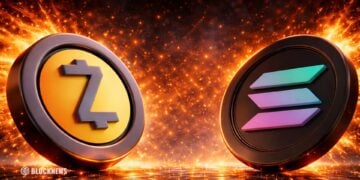- Litecoin becomes the latest Proof -of-Work blockchain to introduce NFTs.
- Anthony Gurrera forked the Bitcoin ordinals code to the Litecoin blockchain, creating the first NFT on Litecoin.
- Ordinals Protocol enables users to inscribe references to digital art into small transactions on the Bitcoin blockchain, essentially creating Bitcoin-based NFT tokens.
A small monetary reward and a knack for coding were all that was required to fork the Ordinals protocol to the world’s second-ever cryptocurrency network, Litecoin, earlier this week, according to its creator.
An Australian software engineer, Anthony Guerrera, posted a GitHub repository that forked the Bitcoin Ordinals protocol to Litecoin. This enabled nonfungible token (NFT)-like assets on the Litecoin network, much like earlier this year on the Bitcoin network.
Guerrera told Cointelegraph that he was inspired to create a Litecoin Ordinal fork after seeing a 5 LTC bounty posted by the pseudonymous Twitter user Indigo Nakamoto on Feb. 11 that rose to 22 LTC, or about $2,000, for the first person to create a fork successfully.
“I knew it was possible because Litecoin has both Taproot and SegWit,” Guerrera explained, adding: “I was in a bit of a rush to get it done as soon as possible.”
Taproot and SegWit are the names given to Bitcoin protocol upgrades that sought to improve network privacy and efficiency while allowing NFT-like structures known as “inscriptions” to be attached to satoshis.
According to Guerrera, the cost of inscribing an image onto the Bitcoin blockchain ranges from tens of dollars; however, the cost of cutting a litoshi — the LTC equivalent of a satoshi — is “about two cents.”
The block space that Ordinals take up on the network is a source of contention among Bitcoiners because their data size is far greater than that of transactions. Guerrera believes this issue will be less prevalent on Litecoin due to its larger block size, but it could still occur.
“Pandora’s Box has already been opened, and someone was going to do it, so it may as well be me.”
Guerrera stated that his LTC fork took about a week to complete because “the changes were quite simple.” He explained that he changed the Ordinals code to accept input from the Litecoin network rather than the Bitcoin network.
The fork had to account for parameters that differed between the blockchains, such as the total possible number of coins and block time creation differences.
Guerrera announced in a Feb. 19 tweet that he had inscribed the first ever Litecoin Ordinal, putting the MimbleWimble whitepaper onto the blockchain in the named “inscription 0.
The whitepaper’s publication follows the May 2022 Mimblewimble Extension Blocks (MWEB) upgrade, which allows Litecoin users to opt-in to confidential transactions and other blockchain improvements, such as assisting in the reduction of excess and unnecessary transaction data.
“I wanted to devote the first inscription to that and make it known that Litecoin now has this privacy sidechain attached to it,” Guerrera explained.
“I’m a fan of the technology, and I like that privacy can become a thing on these public ledgers.”
Guerrera plans to “continue contributing to this fork as much as I can” and will port over updates from the original Ordinals.
“I’m probably going to hand this over because I don’t want it to take up too much of my time,” he added. “I’m doing something else. I’ve got other things on my plate.”
The Buzz Around Bitcoin Ordinals
Proof-of-Work NFTs are creating a buzz in the industry thanks to the rapid rise in the number of Bitcoin Ordinals inscriptions since the beginning of February.
The Bitcoin fork on the Litecoin blockchain comes at the back of a 3-week period that has seen Bitcoin Ordinals create a buzz around the industry with over 154k inscriptions. Since the start of February, developers have been inscribing Ordinals NFTs at an average rate of 7,000 per day based on Dune Analytics data.














